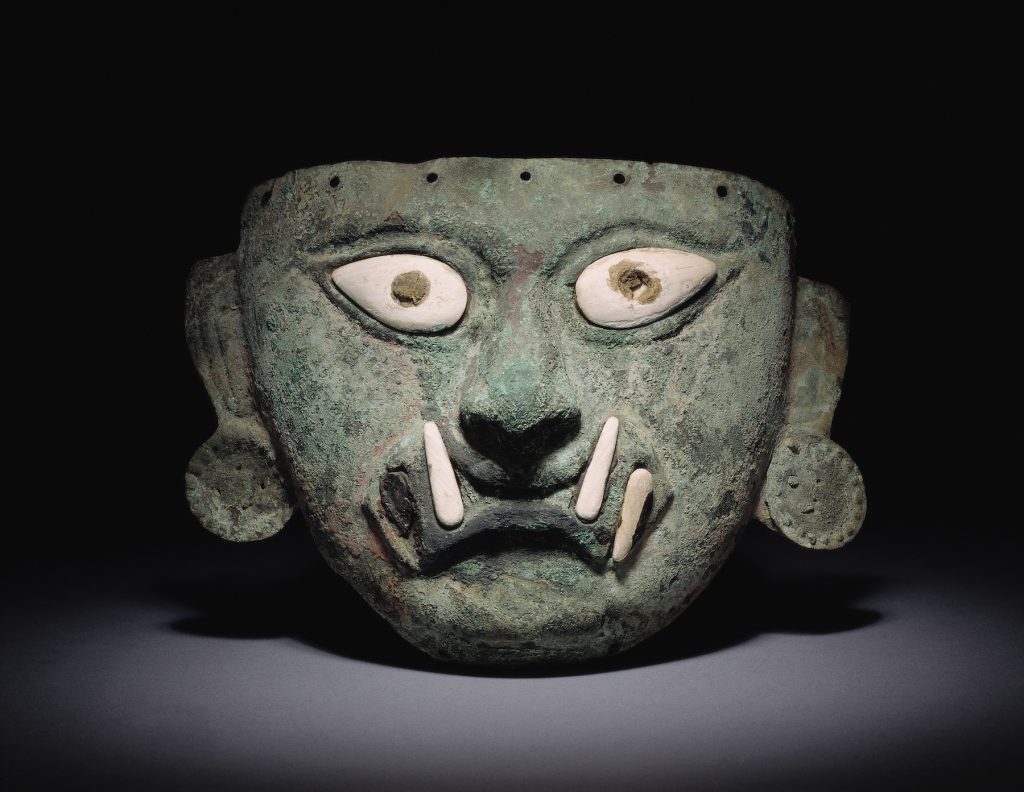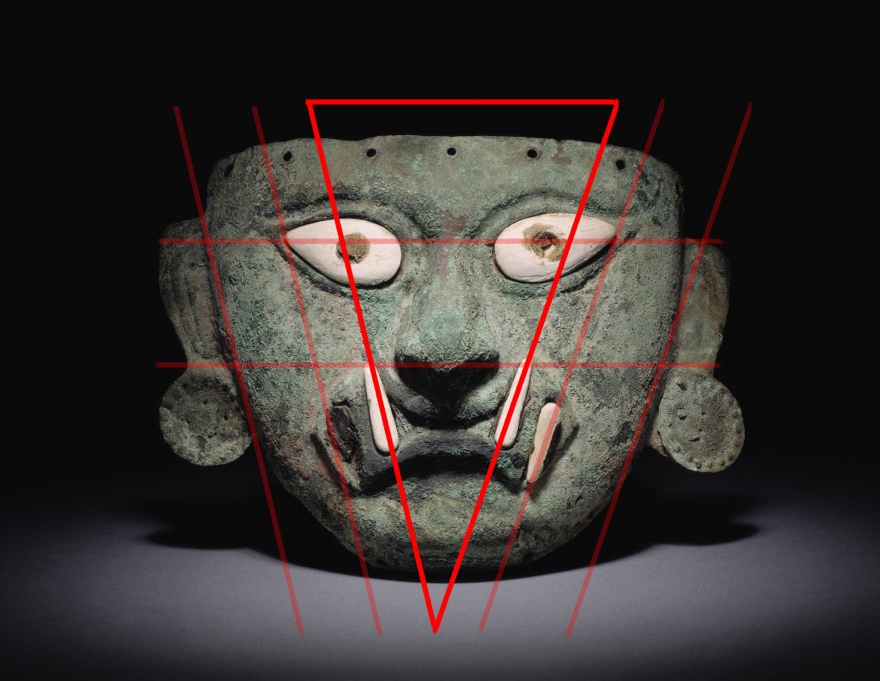In the fall, the exhibition “Machu Picchu and the Golden Empires of Peru,” on view at the Florida Museum of Boca Raton, was chosen for the study. Exhibitions devoted to the ancient American tribe of Machu Picchu are common as archaeological excavations regularly yield new finds. In examining this particular exhibit, I was more impressed by the funerary mask, made of copper, based on one of the most feared mythological gods, Ai apaec. The idea of funerary masks is simple — ceramic pieces decorated with patterns, faces, or hieroglyphs were historically placed on the face of the deceased as an abode for the soul in the afterlife.

The mask found in this exhibition at Boca Raton is both impressive and frightening. It is comparably small and only slightly larger than the shape of a familiar human face: this fully justifies the functional purpose of the mask. This particular specimen is made of copper plate, which gives the object great weight, although it is hollow on the inside. It is noticeable that the mask is not characterized by hard and precise lines, but instead, it is evident in the hand-made smoothness and the presence of voluminous elements. This creates particular intimidation with this arrangement of light, as shown in Figure 1. The lines of light set the accents on the most protruding parts of the mask. What is noteworthy is that the figure of the exhibit is dominated by circular shapes: face, eye pupils, earrings — this gives, according to the principles of design, more feminine features to the mask. It is not excluded that this mask was intended for a noblewoman from Machu Picchu.
At the same time, there is a noticeable balance between femininity and intimidating masculinity in the funerary mask. The protruding cat’s fangs, combined with the directed gaze, hold a contradictory harmony with the tenderness and tranquility usually characteristic of female images in art. With the exception of the fangs, the proportions of a typical human face are generally respected: it is the proportionality of the nasal bone and eyes, the placement of elements on the facial symmetry, and even the rather narrow eye incision and wide ears typical of members of the ancient American tribe. Then we can say that the mask as a whole repeats the face of the deceased, but it is refined with details for the veneration of the god Ai apaec. A closer examination reveals directional forces in the exhibit, namely the continuation of straight lines following from the end of the fangs. These lines visually divide the mask into zones, as shown in Figure 2: with the inner triangular zone concentrated on the most intimidating elements of the mask. Otherwise, the parallelism of the components is noticeable for the mask, indicating the high skill of its unknown author.

The motivation for choosing this particular exhibit was due to the greatest impressiveness under the influence of the intimidating component of the work. On the one hand, it is an ordinary copper mask, which traditionally covered part of the face of the dead. However, upon the long study of it, it seems that this mask inspires reflection on death, horrifying in its gaze and the history of its purpose. The fact that this mask of potential covered the face of long-lived ancestors and is now in the Boca Raton collection makes one wonder about the transience and irony of fate. Among sculptural classifications, this mask most closely resembles Bas relief sculptures, mainly local to southern communities.
Reference
Cascone, S.(2021). Machu Picchu is sending Inca empire treasures on tour for a rare series of international exhibitions and virtual-reality experiences. Artnet. Web.